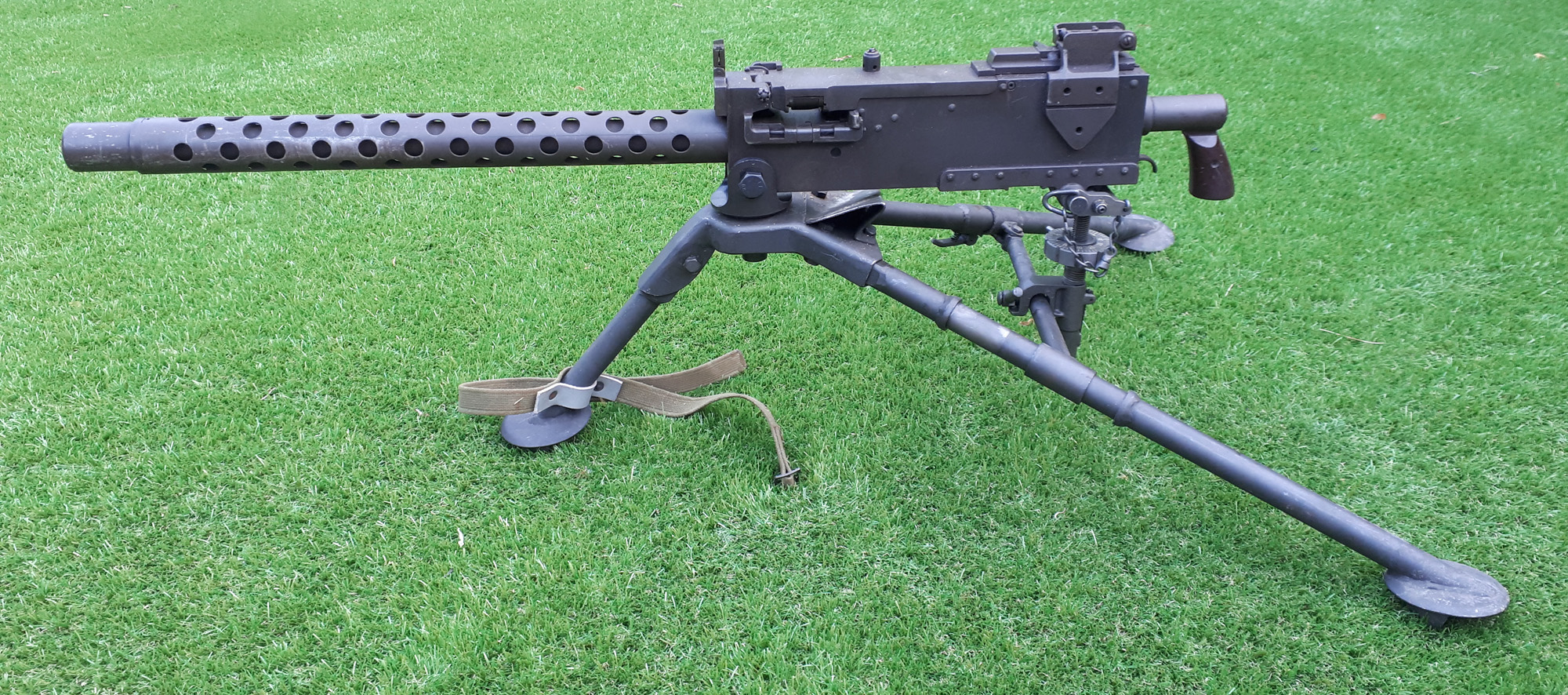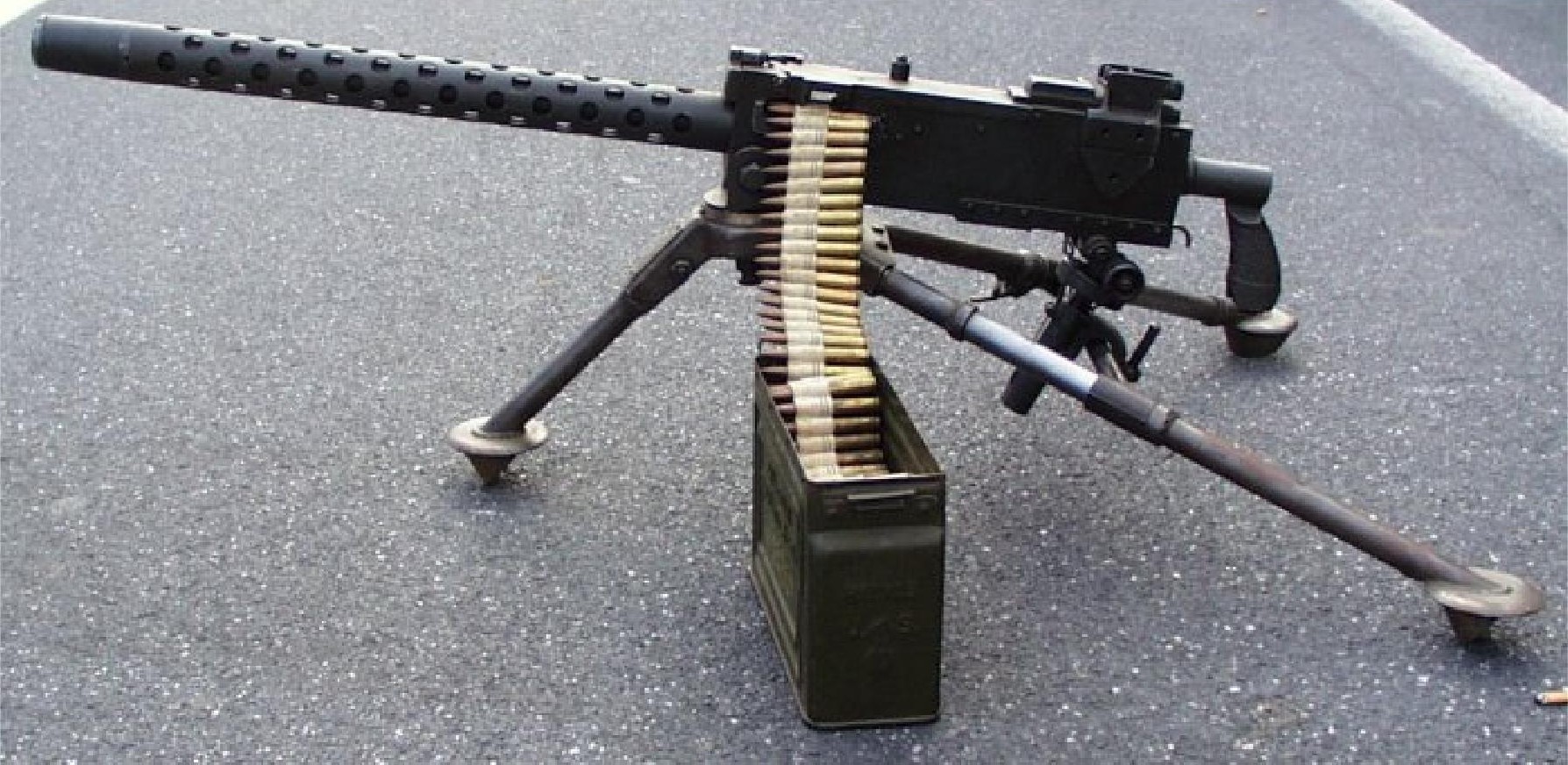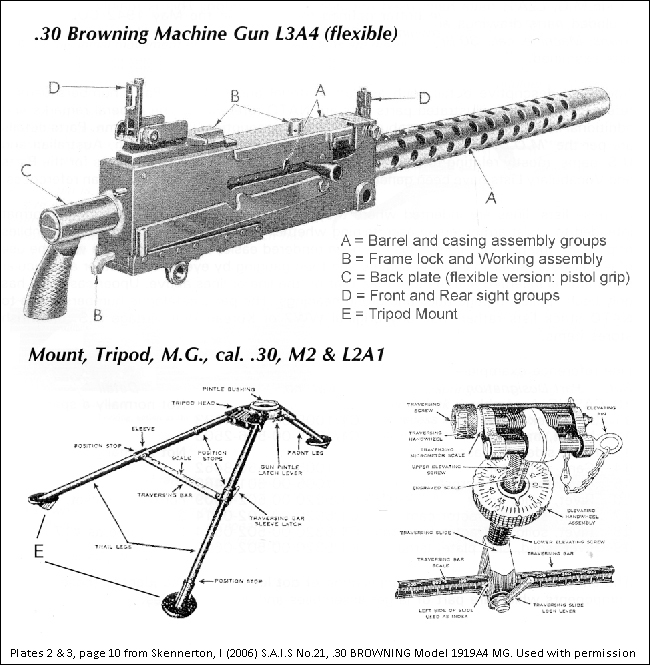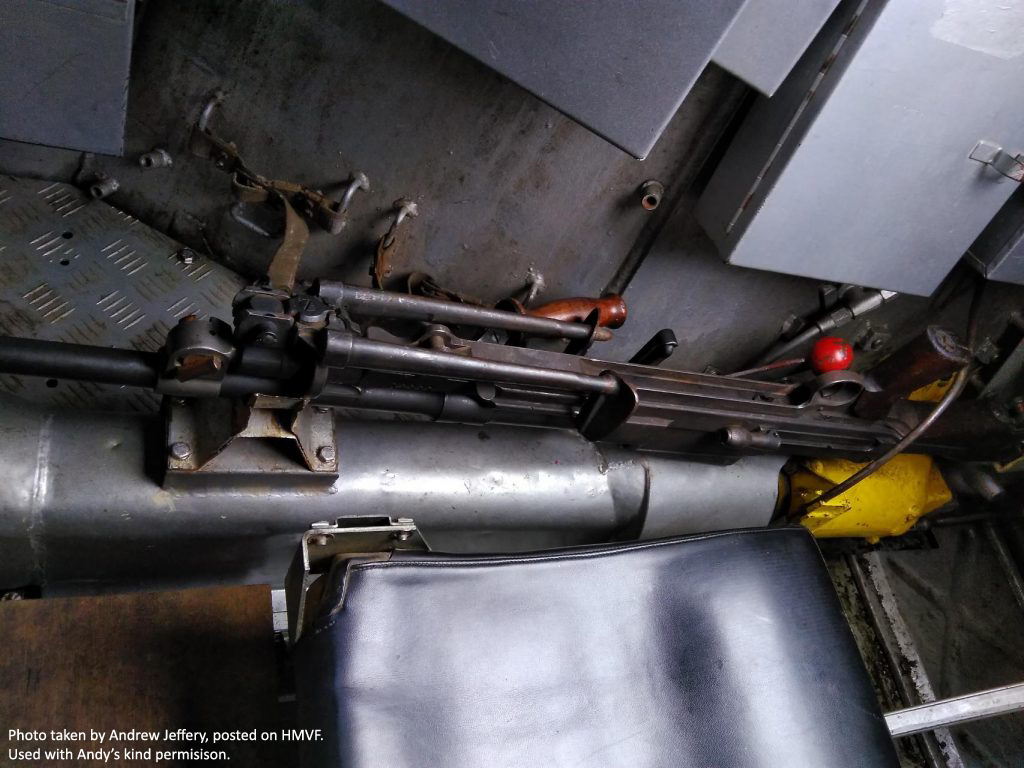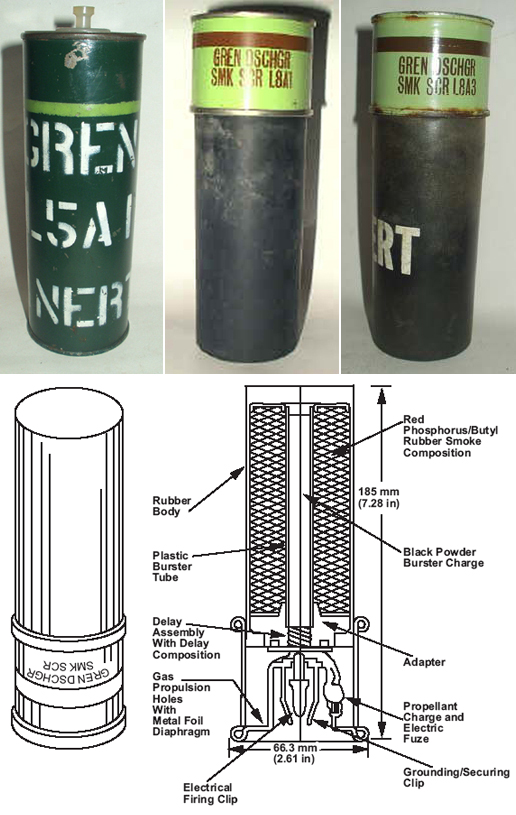The Ferret was lightly armed, commensurate with its liaison/recconnaisance role. Mk 1 Ferrets carried the L4A4 Bren rechambered for 7.62 x 51 mm rounds, or the later GPMG ‘Gimpy‘ on pintle mounts. The left-hand propshaft cover had holders welded on, which allowed the Bren to be stowed in front of the forward-reverse lever. The Mk 2/3 was issued with the Browning 30-cal with cloth belts, disintegrating link or, sometimes, a GPMG (when a hatch sight would be fitted). Full complements of ammunition were generally not carried (and smoke grenades or hand-held No. 36 Mills bombs very rarely) except on exercise e.g. BATUS.
The 30-cal
The 30-cal rifle-calibre Browning was the most popular and most-used machine gun ever designed. The M1919A4 was designed for use as both a fixed vehicle (and later, aircraft) weapon or for flexible fire on a trainable pintle/tripod mounting. The Browning .30-06 cal was originally fitted to the Daimler Ferret because many were left in the British Army’s hands after WWII. It was modified to fire on an open bolt. The safety bar that locks the bolt back was also modified to improve the grip and avoid accidents. The maintenance schedule can be found here.
In the 1960s and 1970s Israel and Canada rebarrelled some of their Brownings and rechambered for 7.62 Nato calibre. As the Royal Armoured Corps moved over to 7.62 NATO stock, so the Browning M1919A4 30-cal was replaced with the L37 version of the 7.62 GPMG ‘Gimpy’ with no butt assembly (a short buffer housing replacing this) and a cone-shaped flash suppressor. The 30-cal had greater penetrating power than a 7.62 round, although the same bullet was used, because the cartridge case is longer. The tripod (carried on the rear left-hand engine desk, lashed down with Footman loops) and traverse & elevation (T&E) mechanism were issued to armoured vehicles to enable the weapon to be used in the dismounted role.
66 mm smoke grenade dischargers
These were very rarely used, and munitions hardly ever carried except on exercise. One comment on the HMVF is: ‘Smoke grenades for a Ferret?!?!? I drove and commanded Ferret on and off for most of my seven years (75 – 82) and never saw a smoke grenade!‘ The use of pyrophoric White Phosphorus to generate the screening smoke caused two problems for the users. Firstly the smoke screen was of short duration and secondly WP was hazardous to the armoured vehicle, particularly when under small arms fire. ‘Willie-Pete’ was withdrawn from use in the British Army in 1997. The L5A1 smoke grenade was subsequently employed on the ‘A’ vehicle fleet. The modern equivalent is the L8A1/A3 with internal squibs. Hand grenades would have been of two types when issued: The No. 36 Mills bomb and the British L2 type. Training grenades (L3 series) are coloured light blue. The hand-held No. 80 smoke grenade measures 68 mm diam. and, contrary to popular belief, will not fit into the 66 mm launchers.
Personal weapons
Sometimes a rack is fitted above the radios to carry the commander’s Sterling SMG. The driver’s Sterling would be loose inside, not stowed, wherever the driver could find room for it. A 1 inch Very pistol (flare gun) was listed on the vehicle CES and was often carried.
References:
- Browning M1919A4 US Army basic field manual (1940)
- Rottman, GL (2014) Browning .30-caliber machine guns, Osprey, ISBN = 978-1780969213
- Rottman, GL (2015) The Hand Grenade, Osprey, ISBN = 978-1472807342
- Skennerton, ID (1994) .30-cal Browning Model 1919A4 Machine Gun, SAIS No. 21, ISBN = 0-949749-32-X
- Skennerton, ID (1994) 303-in Bren Light Machine Gun, SAIS No. 5, ISBN = 0-949749-23-0
Useful websites:
- Browning machine gun – US caliber .30 website
- BMG parts – what it says on the tin
- Firing the 30-cal M1919A4 Browning
- If you want stuff on the 50-cal, and firing
- Military cartridges & Various grenades
RIF links and VCR 2006 Act
Browning M1919A4 with
fabricammo belt

Pintle-mounted Bren
on Mk 1 Ferret

